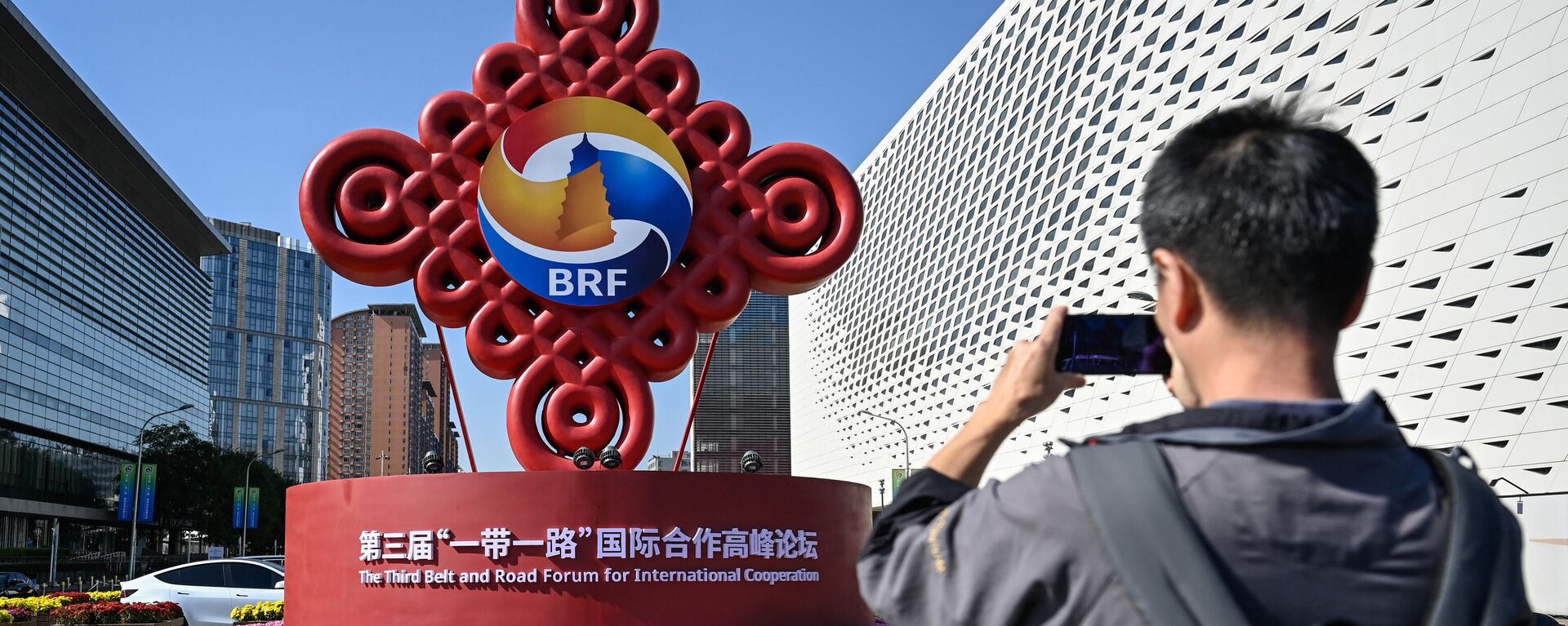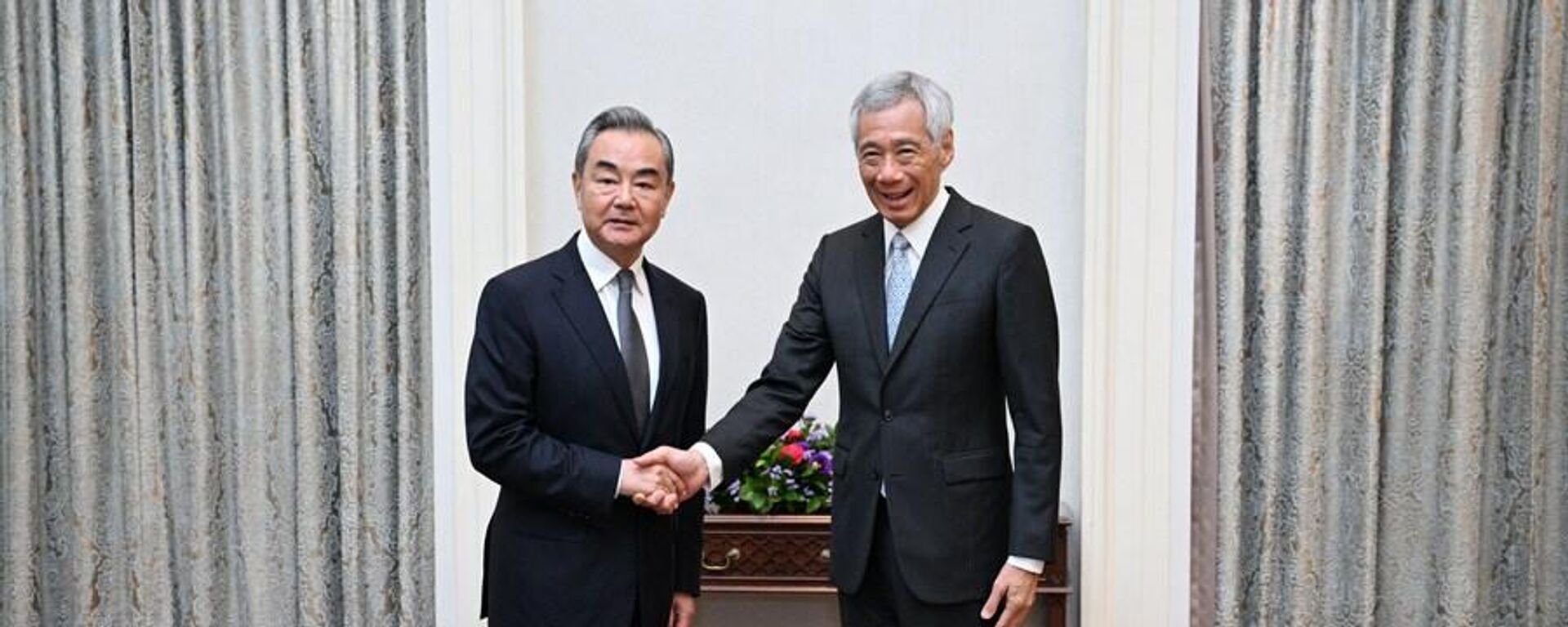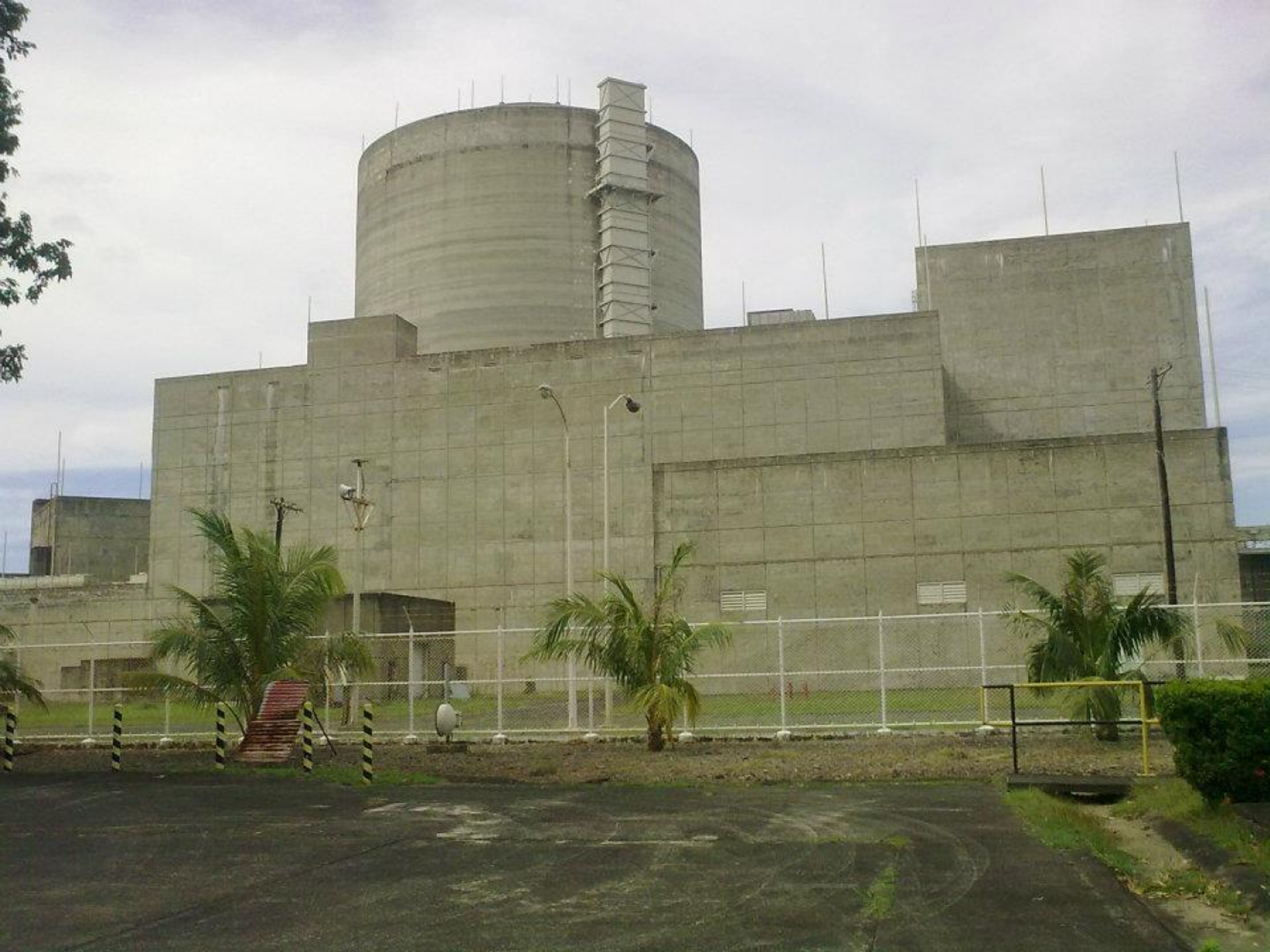https://sputnikglobe.com/20231117/philippines-pens-nuclear-fuel-deal-with-us-as-tensions-rise-in-pacific-1115027797.html
Philippines Pens Nuclear Fuel Deal With US as Tensions Rise in Pacific
Philippines Pens Nuclear Fuel Deal With US as Tensions Rise in Pacific
Sputnik International
The US expanded its partnership with a key Southeast Asian ally on Thursday, penning a new agreement on nuclear power with the Philippines.
2023-11-17T18:26+0000
2023-11-17T18:26+0000
2023-11-17T18:26+0000
world
philippines
apec
antony blinken
treaty on the non-proliferation of nuclear weapons
nuclear power plant
ferdinand marcos jr.
https://cdn1.img.sputnikglobe.com/img/07e7/0b/11/1115028198_0:0:3072:1728_1920x0_80_0_0_ad308ad98bc99b02d6e9e9f2e98ed5c6.jpg
The pact on reintroducing nuclear power to the Philippines was signed in San Francisco on Thursday on the sidelines of the Asia Pacific Economic Cooperation (APEC) summit by Philippine Energy Secretary Raphael Lotilla and US Secretary of State Antony Blinken, with president Ferdinand Marcos Jr. in attendance.Blinken said the nuclear plants would help Manila dramatically cut the nation’s greenhouse gas emissions by up to 75% by 2030 and would help the island nation meet its expanding energy needs, which are expected to quadruple by 2040.“In a nation of more than 7,000 islands, small modular reactors - some just the size of a city bus - can generate energy locally and conveniently,” he added.However, in Marcos’ comments, he said that nuclear power would become “a part of the Philippines’ energy mix by 2032,” two years after his own stated goal of a 75% greenhouse emission reduction, making it unlikely either the goal will be reached on time or that nuclear power will play a sizeable role in achieving it.In June, Lotilla noted nuclear power is the cornerstone of the decarbonization effort in the energy sector, but said the government was exploring other technologies, such as hydrogen fuel cells, and looking at reducing their use of coal by turning coal-burning plants into ammonia-burning cogeneration plants. In 2021, the country got 58% of its electricity from coal, the most pollutive fossil fuel, according to government data.Manila's Pursuit of Nuclear PowerUnder the Philippine Energy Plan, Manila plans to be producing 1,200 megawatts using nuclear power by 2032, which would increase to 2,400 MW by 2040 and to 4,800 MW by 2050.The pact is what is called a Section 123 Agreement by the US Department of Energy and is a legally mandated agreement outlining how the US and the partner nation will share and care for nuclear technology for peaceful purposes within the confines of the Treaty on the Non-Proliferation of Nuclear Weapons (NPT).The effort to revive nuclear power in the Philippines was begun by Marcos’ predecessor, Rodrigo Duterte, who had a less rosy relationship with the US than Marcos, the son of a Philippine dictator who was very closely aligned with Washington.Last year, Washington and Manila signed a memorandum of understanding on civil nuclear cooperation that included reviving the mothballed Bataan Nuclear Power Plant, a 620-megawatt pressurized light water reactor built by the US nuclear power company Westinghouse in 1976, while Marcos Sr. was president. However, as the plant neared completion, the 1986 disaster at the Chernobyl Nuclear Power Plant in the Soviet Union caused Manila to get cold feet about nuclear power, and the building has sat dormant ever since having never been fueled or turned on.Separately from the 123 Agreement, Marcos said the Philippine electric company Meralco, which provides electricity in the Manila area, had signed a deal with the US-based Ultra Safe Nuclear Corp (USNC) for a pre-feasibility study on Micro-Modular Reactors (MMRs), a type of small nuclear reactor that can be transported on a trailer to “power communities in the middle of nowhere, large industrial sites, and cities,” according to the company.Key US AllyA former colony of the United States from 1898 to 1946, the Philippines has remained a close US ally in the decades since independence, hosting several large US military bases that played key roles in the US wars in Korea and Vietnam.Since the US began its strategic shift toward “great power competition” with Russia and China, Washington has courted Manila as a key partner in “containing” China and pulling the nation of 114 million people away from Beijing’s orbit.Still, the Philippines, China, and other regional powers have pushed ahead on de-escalation efforts, including establishing direct hotlines and working toward a universal code of conduct for the South China Sea that would govern all interactions in the waterway in accordance with the UN Convention on the Law of the Sea (UNCLOS).
https://sputnikglobe.com/20231103/why-the-philippines-pulled-out-of-chinas-belt-and-road-project-1114689600.html
https://sputnikglobe.com/20230811/chinas-wang-yi-warns-singapore-us-biggest-destabilizing-factor-in-the-world-1112542462.html
philippines
Sputnik International
feedback@sputniknews.com
+74956456601
MIA „Rossiya Segodnya“
2023
News
en_EN
Sputnik International
feedback@sputniknews.com
+74956456601
MIA „Rossiya Segodnya“
Sputnik International
feedback@sputniknews.com
+74956456601
MIA „Rossiya Segodnya“
philippines nuclear deal, nuclear power philippines, apec summit
philippines nuclear deal, nuclear power philippines, apec summit
Philippines Pens Nuclear Fuel Deal With US as Tensions Rise in Pacific
The US expanded its partnership with a key Southeast Asian ally on Thursday, striking a new agreement on nuclear power with Manila.
The pact on reintroducing nuclear power to the Philippines was signed in San Francisco on Thursday on the sidelines of the Asia Pacific Economic Cooperation (APEC) summit by Philippine Energy Secretary Raphael Lotilla and US Secretary of State Antony Blinken, with president Ferdinand Marcos Jr. in attendance.
Blinken said the nuclear plants would help Manila dramatically cut the nation’s greenhouse gas emissions by up to 75% by 2030 and would help the island nation meet its expanding energy needs, which are expected to quadruple by 2040.
“With access to US material and equipment, the US and the Philippines will be able to work together to deploy advanced new technologies, including small modular reactors, to support climate goals as well as critical energy security and baseload power needs within the Philippines,” Blinken said.
“In a nation of more than 7,000 islands, small modular reactors - some just the size of a city bus - can generate energy locally and conveniently,” he added.
However, in Marcos’ comments, he said that nuclear power would become “a part of the Philippines’ energy mix by 2032,” two years after his own stated goal of a 75% greenhouse emission reduction, making it unlikely either the goal will be reached on time or that nuclear power will play a sizeable role in achieving it.
In June,
Lotilla noted nuclear power is the cornerstone of the decarbonization effort in the energy sector, but said the government was exploring other technologies, such as hydrogen fuel cells, and looking at reducing their use of coal by turning coal-burning plants into ammonia-burning cogeneration plants. In 2021, the country got 58% of its electricity from coal, the most pollutive fossil fuel, according to
government data.

3 November 2023, 14:43 GMT
Manila's Pursuit of Nuclear Power
Under the Philippine Energy Plan, Manila plans to be producing 1,200 megawatts using nuclear power by 2032, which would increase to 2,400 MW by 2040 and to 4,800 MW by 2050.
The pact is what is called a
Section 123 Agreement by the US Department of Energy and is a legally mandated agreement outlining how the US and the partner nation will share and care for nuclear technology for peaceful purposes within the confines of the Treaty on the Non-Proliferation of Nuclear Weapons (NPT).
The new deal will allow Manila to buy nuclear fuel from the United States as well as reactors, equipment, and other specialized nuclear material. Ironically, the US itself buys nearly all of the uranium-235 used to power its nuclear power plants from other nations, including Russia.
The effort to revive nuclear power in the Philippines was begun by Marcos’ predecessor, Rodrigo Duterte, who had a less rosy relationship with the US than Marcos, the son of a Philippine dictator who was very closely aligned with Washington.
Last year, Washington and Manila
signed a memorandum of understanding on civil nuclear cooperation that included reviving the mothballed
Bataan Nuclear Power Plant, a 620-megawatt pressurized light water reactor built by the US nuclear power company Westinghouse in 1976, while Marcos Sr. was president. However, as the plant neared completion, the 1986 disaster at the
Chernobyl Nuclear Power Plant in the Soviet Union caused Manila to get cold feet about nuclear power, and the building has sat dormant ever since having never been fueled or turned on.
Separately from the 123 Agreement, Marcos said the Philippine electric company Meralco, which provides electricity in the Manila area, had signed a deal with the US-based Ultra Safe Nuclear Corp (USNC) for a pre-feasibility study on
Micro-Modular Reactors (MMRs), a type of small nuclear reactor that can be transported on a trailer to “power communities in the middle of nowhere, large industrial sites, and cities,” according to the company.

11 August 2023, 19:30 GMT
A former colony of the United States from 1898 to 1946, the Philippines has remained a close US ally in the decades since independence, hosting several large US military bases that played key roles in the US wars in Korea and Vietnam.
Since the US began its strategic shift toward “great power competition” with Russia and China, Washington has courted Manila as a key partner in “containing” China and pulling the nation of 114 million people away from Beijing’s orbit.
Washington has thrown its weight behind Manila’s claims over islands and waterways in the South China Sea, some of which overlap with those made by China and Vietnam. A series of ongoing feuds between Beijing and Manila have kept relations between them sour, the most recent of which is over Ren'ai Reef, a submerged reef in the Spratly Island chain on which the Philippine Navy has wrecked a rusting freighter and claimed it forms an island over which they can exert sovereignty.
Still, the Philippines, China, and other regional powers have pushed ahead on de-escalation efforts, including establishing direct hotlines and
working toward a universal code of conduct for the South China Sea that would govern all interactions in the waterway in accordance with the UN Convention on the Law of the Sea (UNCLOS).







